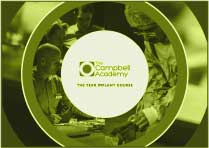.png?width=1627&height=517&name=Full%20TCA%20Logo%20(Purple).png)
‘Turnover is vanity, profit is sanity, cash flow is reality’.
There is a definite move and trend in dentistry, in particular in implant dentistry, to count the numbers and to publicise or at least infer that a larger number indicates a greater likelihood of an outcome of success.
It seems clear that the old game of ‘how much are your grossing’ which was played by NHS dentists all over the country during the days of item of service and was a question similar to ‘how big is your c*ck’. It has returned with vengeance, in implant dentistry at least, with ‘how many implants have you placed?’
Before I go into those points it’s worth mentioning (and I’ve mentioned it before) that there is almost no chance of a new graduate or even a young dentist at this stage entering into implant dentistry ever being able to replicate the numbers from the guys who started placing implants regularly in the later 90’s and early 00’s.
As I’ve written before in these pages and as I’m sure I’ll write again, the world has changed beyond recognition from those days. The climate which existed and was akin to the wild west and to the pioneers in wagons who passed over that continent looking for gold and riches has entirely gone. It’s changed into a dessert glittered with hazards and barriers from achieving anything like the numbers that were achieved by the few people who were in it at the start.
This is both a good and a bad thing.
Implant dentistry in the UK has been propped up by a relatively small number of people placing a relatively large number of dental implants. During this time, they have gained skills and experience which has allowed them to continue to exist.
These individuals are now leaving clinical practice faster than characters that are killed in Game of Thrones.
Industry wide the implant companies are propped up by very few people at the top of the customer chain that place the most implants. 10% of all implant customers account for approximately 90% of the work carried out.
The difficulty here is that there is no truth (apart from the implant companies who have all the figures) and when people chat to each other at meetings they inflate their statistics massively while at the same time having almost no insight into any problems or outcomes.
Take for example someone who reports that they place 500 implants per year. They will also say that they restore these implants. The time required to report, plan and access that number of patients and then to provide the restorative work as well as deal with complications, issues and maintenance related to these individuals makes it almost unattainable (apart from the most talented, committed and resilient of clinicians) to achieve this in any meaningful way.
For the very very few people who are able to cope with that extraordinary level of work they can’t possible by counting and reflecting on their own practice in a way which continually makes them better.
Those of us of a certain age all knew practitioners who are able to bang out 30-40 amalgam fillings per day on the old item of service frame work, therefore over a career they will place 1000’s and 1000’s of such restorations and never improve or reflect in any way.
Big numbers don’t mean big skill, and they don’t mean improving quality.
Like all things there is probably an inverted U curve, the ideal point sits somewhere in the middle where you can balance the administrative and logistical planning of implant cases against the execution of surgery and restorative treatment and then purposeful practice on reflection.
I had this discussion when I went to the University of Bern some years ago to train. I had a young female demonstrator who I was desperate to impress. I wanted to tell her how many implants I had placed and how many surgical procedures I had carried out. She was utterly uninterested both in me and in the numbers that I was trying to tell her because she had an instinctive understanding that numbers don’t count for anything in relation to quality.
This is worn out and personified clearly in our practice by Beatriz Sanchez who has now probably placed around 200 dental implants but is fast becoming one of the best implant surgeons I have ever seen due to her attention to detail both in planning, in execution and her empathy for patients.
For my own practice, I counted everything instinctively from the start.
I was one of the first providers of minor oral surgery in practice on a PDS contract which started in 1998. I stopped counting surgical extractions at 10,000 and stopped counting lower 3rd molar extractions at 2,500. The sad part is that many of those extractions, and particularly in the earlier part of my career were never reflected upon and therefore from a learning point of view I never improved.
I do much less oral surgery these days but there is a joy in it now and I love to plan it, execute it and reflect. Between 1998 and 2008 I managed to bang in over 2,500 dental implants which I logged carefully on a computer at the practice that I worked at.
Those numbers were erased immediately when the IDH’s take-over of the practice occurred and were lost forever (much to my destress at the time). I also lost all my sedation assessment data and the procedures carried out which were 100’s and 100’s of sedation cases. Immediately on moving from the IDH practice in 2008 I started collecting again in more detail this time and more carefully. I will be publishing the 10 year results of that in these pages in a few week’s time (as a spoiler the reported failure rate is 2.7%).
The truth is though it doesn’t matter now.
My number of implant placements is falling by design as I try to focus much more on what I’m doing and also helping other people in the practice push their practice forwards.
Once we pass a point of competence it’s time to stop talking about how many implants we have placed or how many procedures we’ve carried out and just get busy with the work. To help other people get better at what they’re doing and try and fill the skill gap that’s appeared because the world has changed.
For the rest of my career I will be the guy who stopped counting surgical extractions at 10,000, sedation at 500, apicectomy’s at 500 and implants placed at 5,000. It doesn’t matter how many more I ever do, it’s about how much better I can possibly get.
Blog post number: 1559





Leave a comment